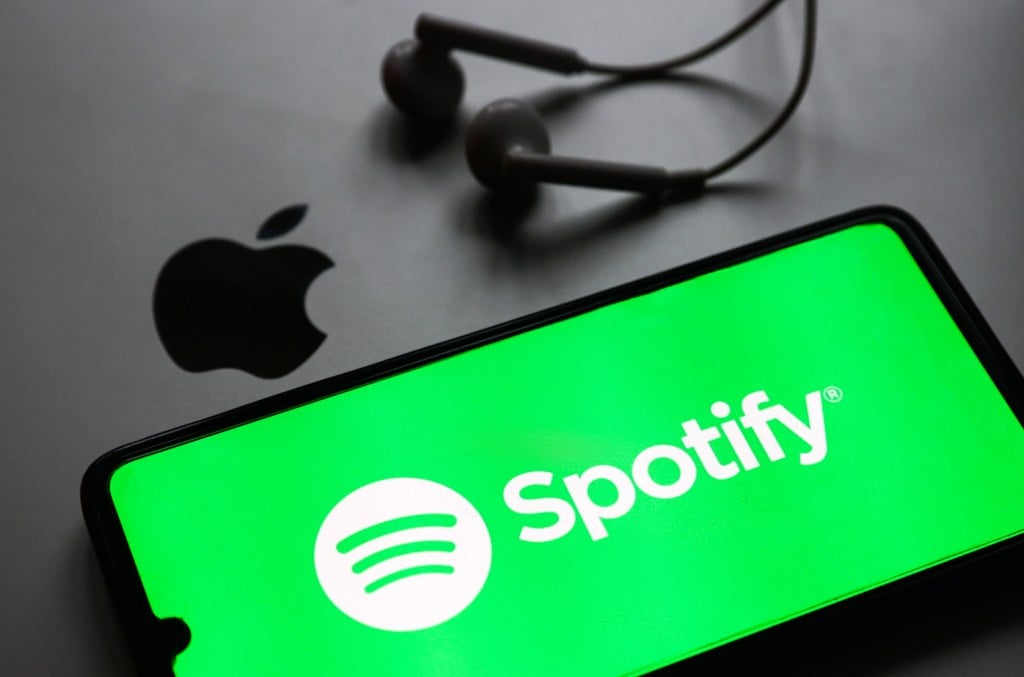When Bloomberg reported that Spotify would be upping the cost of its premium subscription from $9.99 to $10.99, and including 15 hours of audiobooks per month in the U.S., the change sounded like a win for songwriters and publishers. Higher subscription prices typically equate to a bump in U.S. mechanical royalties — but not this time.
By adding audiobooks into Spotify’s premium tier, the streaming service now claims it qualifies to pay a discounted “bundle” rate to songwriters for premium streams, given Spotify now has to pay licensing for both books and music from the same price tag — which will only be a dollar higher than when music was the only premium offering. Additionally, Spotify will reclassify its duo and family subscription plans as bundles as well.



Edit: I didn’t really make it clear, my interest in services like Bandcamp wasn’t higher quality music, it was that it was run by at least a relatively benign company that seemed to treat artists like actual human beings who artistic labor was inherently valuable. I would buy craft beer/cider/meader even if Budweiser or Coors Light was actually better quality beer, what I care about at the end of the day is my money going to someone or something good
I have spent a lotttt of time messing around with music production and learning what is pseudo-science (a whole fuckton of it) and what is real science. In all of the ABx testing I have done, read about, and seen demonstrated in person myself a quality MP3 with a decent bitrate encoding (idk 128kps or so?) using a decent algorithm and hell even a sampling rate of 41khz will produce an audio recording that when played back on a hifi audio system and level matched (EXTREMELY IMPORTANT, it is well known in mastering and mixing that a louder mix always sounds better at first glance) is indistinguishable from the source .wav file to the human ear (I don’t care how super human you claim your ear is).
People make this silly mistake of thinking that digitization introduces these sharp staircase edges into audio waveforms, which is actually kind of a hilarious misconception (which I completely understand, not trying to insult people’s intelligence) because the entire idea of converting a waveform (an analog non-bandwith limited phenomena) into a bandwidth-limited digital waveform is utterly reliant on the idea that the analog reproduction of a digital square wave/stair step function with a voicecoil and diaphragm, physical hardware components with shape, size and crucially mass, must necessarily create a smooth analog waveform because physical hardware components have mass and momentum, they aren’t theoretical ideas. It is better to think of a bandwith limited digital waveform as a series of movement commands for an RTS unit in Starcraft 2. The unit will naturally path between discrete points in a way that creates fluid movement, fundamentally it wouldn’t make any sense for the unit to just teleport directly to where you click and then teleport directly to where you click next etc…
I mean let us consider Vinyl records for a second, maybe you like most people have a vague perception they are kind of a hifi audio thing for people that reallllllly care about audio quality and don’t want to listen to chopped up and compressed digital audio files using a gasp consumer DAC that came stock in their laptop.
This quote from an old reddit thread discussing how CDs actually have far better signal-to-noise ratio fidelity than Vinyls (and really all decent quality digital audio files) about sums it up.
As for quantitative audio quality differences between the two mediums, the CD is superior. CDs operate at a sampling rate of 44.1kHz. These are discrete points, versus the continuous signal produced by a physical vinyl groove. However, the Nyquist-Shannon sampling theorem explains why a 44.1kHz sampling rate is sufficient for completely reproducing frequencies up to 44.1 / 2 or 22.05 kHz (See http://en.wikipedia.org/wiki/Nyquist–Shannon_sampling_theorem ). True response will actually be lower than 22.05 kHz due to the various anti-aliasing filters involved in the analog-to-digital and digital-to-analog conversion process to prevent frequencies above 22.05 kHz from aliasing down into the audible range (See http://en.wikipedia.org/wiki/Aliasing#Folding ).
Furthermore, the CD is recorded with 16 bits of resolution, results in an output with 65,536 discrete voltage ‘steps’ on the output. This does introduce some quantization noise, because the real signal is ‘rounded’ up or down to the nearest of the 65,536 steps. This is another area where some people claim vinyl is superior due to the lack of quantization of the output. But in practice, vinyl only has 9-10 bits of resolution (IIRC) due to manufacturing tolerances. To achieve around 16 bits of resolution, the tolerance of production for the groove would have to be on the order of 1/65,536 or ~0.001%. That’s not going to happen on those tiny grooves. Also, you have to consider the non-zero inertia of the physical pick-up moving across those tracks, which will introduce a separate set of distortions as it moves around.
https://www.reddit.com/r/askscience/comments/1ic9f0/do_vinyls_really_have_a_better_audio_quality_than/
Believe I’ve gone down a similar path. I agree, but I assumed the layman dedicated music fan would at least be curious.
And on another note we need more discussion music and audio production around Lemmy.